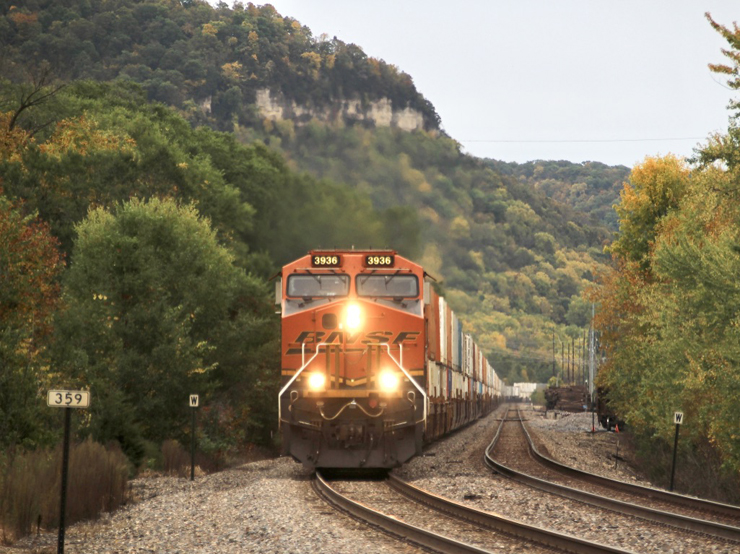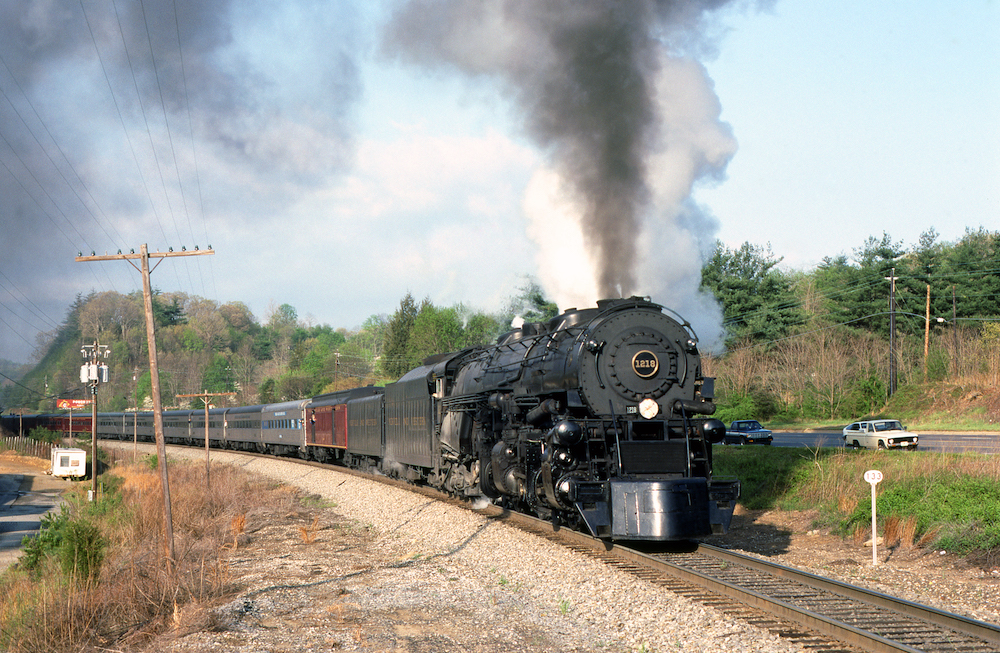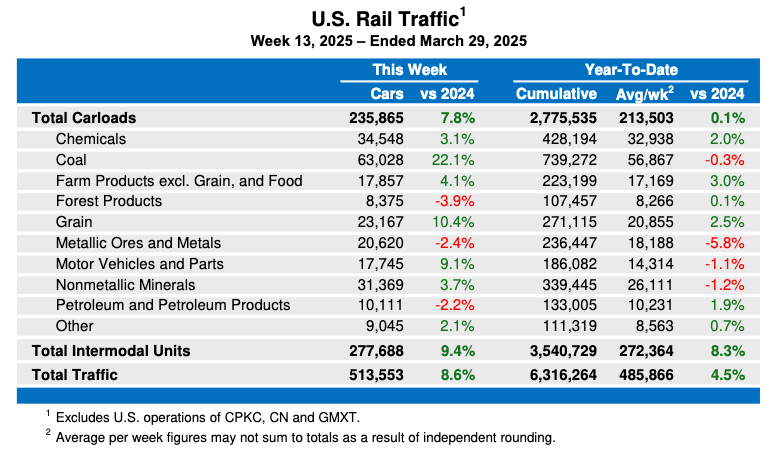The model
Though there are many books and article with bits and pieces about the M-10000, my favorite is Union Pacific Streamliners by Harold Rank and William Kratville (Kratville Publishing Co., 1974). I sat down with their book in my lap and the train on my desk and was exceptionally pleased with the steps MTH took to duplicate this baby.
To my eye, the model captures all of the major reference points. Unlike the diminutive RailKing version (which is a nice representation even considering its shortened dimensions), the Premier version of this train is scale length and captures the speed-stretched nature of the prototype.
True to the prototype, the model is a virtual “Rivet City.” There are a ton of the little cast-in babies on the shell.
Opening doors, working marker lights, and a longer snout also distinguish the Premier-line M-10000 from the RailKing version. The cars all have large windows and full interiors, but no passengers. At a $600 cataloged price, MTH could have placed a few folks in the passenger cabins of this rig.
Like the RailKing version, the articulated Premier line M-10000 uses prewar-style rounded plastic vestibules to join the cars. It’s not at all prototypical, but visually it looks much better than the flexible doorway diaphragms MTH uses on its articulated Zephyrs.
On the test track
We reviewed the RailKing version of the M-10000 in our December 2001 issue and were eager to see how the Premier line cousin stacked up.
On the test track I measured the train’s slow-speed at 3.8 scale mph and high-speed at 56.4 scale mph.
In the midst of testing the M-10000 we received MTH’s Digital Command System, so this is the first piece of ProtoSound 2.0 equipment we’ve been able to review in command-control as well as conventional modes. That said, in DCS command mode I was able to get the locomotive creeping along at just over 2 scale mph.
Drawbar measurements for the M-10000 are academic. The only thing you can add to this outfit are more M-10000 cars, but if you want to add a few more, the train, with two can motors (one in the cab and one in the tail) has a healthy pull of 1 pound, 8 ounces.
My testing was soured a bit by a middle vestibule-mounted truck (between the power car and the first coach) that wouldn’t always re-align after exiting O-72 curves on my home layout. I disconnected and reconnected it several times and squirted some lube to help it pivot, but the problem kept cropping up.
I spoke to several MTH dealers who reported no customer complaints along this line, so I’ll presume the problem was unique to our sample, or my lack of dexterity in mating the sections!
Operating in conventional mode, the ProtoSound 2.0-equipped locomotive performed as expected, delivering some spiffy effects.
But operating in command mode is all new. (See the full DCS report on page 44.) For me, the DCS speed control has so many positions (50 mph, 49 mph, 48 mph, 47 mph, 46 mph…) that I had to adjust my technique for stopping a train exactly at the station!
Sound features include the ultra-cool Doppler effect. You set a starting point on your layout where the train is closest to you. As the train heads away from you its volume automatically lowers. Halfway around it is nearly silent. As the train turns toward you it grows louder and louder, rising to a climax as it passes in front of you.
Another favorite is “clickety-clack.” Tired of motor noises? Turn on this feature, and at speeds above 30 scale mph the motor noises are replaced with the “rhythm of the rails” (which was far more enjoyable than I anticipated).
Also included is what I call the “American Bandstand” feature, where you can put a music cassette into a Sony Walkman, plug the headphone cord into the DCS base unit, and listen to bagpipe music coming from the belly speaker of the M-10000. Of course, this isn’t Bose Wave Radio sound quality, but it is fun!
Close behind is the ever popular “Mr. Microphone” feature, which allows you to yell at your railroad yard workers through the train speaker for working too slowly or announce to your 1:48 scale passengers that the train has been delayed and a Trailways bus will take them to their final destination!
Although I thoroughly enjoyed the shorter RailKing M-10000, the Premier line M-10000 follows the adage that bigger is better. It is a well-made, good-looking model of a landmark streamliner. Performance numbers are solid, and the features that you can access through DCS definitely add extra spark to running this rig.














